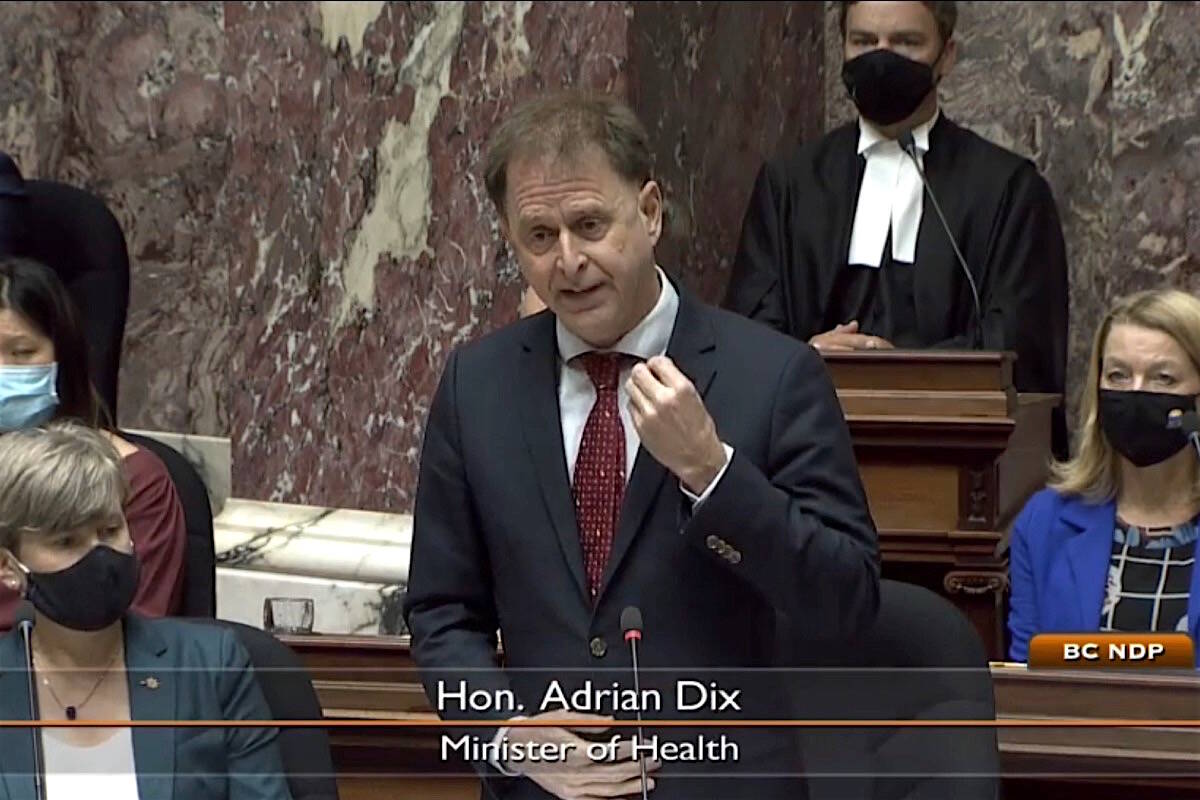B.C. Premier John Horgan says B.C.’s health care system is in crisis as the province’s efforts to recruit doctors and nurses to staff a network of urgent and primary care centres has not kept up with demand for services.
Horgan and Health Minister Adrian Dix struggled to defend the situation in the B.C. legislature this week, as opposition critics relayed horror stories from constituents unable to get into walk-in clinics and urgent care centres, even for simple things like renewing a prescription.
B.C. Liberal MLA Todd Stone said MLAs across the province are being inundated with calls and emails about the situation, as the number of people without a family doctor approaches one million, even as Dix’s core strategy has produced 27 primary care clinics and more than 50 local care network teams.
“The fact of the matter is every walk-in clinic in the premier’s backyard was at capacity before 11 o’clock this morning, with one exception: Esquimalt’s medical clinic, which has a five-hour wait time,” Stone told the legislature April 28.
He said many of the pleas for action are coming from health care professionals, quoting nurses who described burnout and early retirement from hospital staff after two years of COVID-19 absences and overtime. Some have moved to the public primary care centres to stabilize their working hours, and the ministry has recruited doctors to close their family practices and join them as well.
RELATED: B.C. aims to make it easier for foreign nurses to start work
RELATED: Interior Health offers $10K signing bonuses for lab techs
Dix said the clinics and a rapid increase in phone and other remote services has increased the number of fee-for-service doctor visits, which pay the doctor about $30 per visit. The current fee-for-service contract with independent doctors expired in March.
“We’re transforming the system and moving — yes, slowly — away from the fee-for-service model,” Dix told the legislature.
B.C. Green Party MLA Adam Olsen described a clinic in his Saanich North and the Islands constituency with 24 doctors who are “fundraising for overhead,” unable to cover support staff and rent costs from the fee-for-service formula.
Dix repeated Horgan’s argument that the federal government’s share of health care funding has fallen from the original 50-50 split to 22 per cent. Horgan’s lobbying for an increase as chair of the premiers’ Council of the Federation were not successful, as the Justin Trudeau government put most of its new health funding into a new national dental care program and preparing for a national pharmacare system.
@tomfletcherbc
tfletcher@blackpress.ca
Like us on Facebook and follow us on Twitter.

